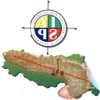Vacuum Assisted Closure Therapy in Severe Acute Pancreatitis: Case Report and Literature Review
Abstract
Context Abdominal compartment syndrome (ACS) is one of the most worrisome complications of hemorrhagic necrotic pancreatitis (HNP) and its prevention or correct treatment is crucial for patient survival. Case report A 29-year-old male patient with clinical history of sarcoidosis and alcoholic consumption was admitted to our Surgical Unit in March 2012 with diagnosis of severe acute pancreatitis. Clinical evaluation and laboratory tests revealed concurrent sepsis and anemia (WBC 34.91 x103/µL; PCR 34.76 mg/dL; LDH 714 U/L; Hb 10.1 g/L); a CT scan showed a wide pancreatic necrosis and multiple abdominal collections. These findings were suggestive of an infected pancreatic necrosis. A surgical abdominal toilette, necrosectomy and drainage of a large serous-hematic retroperitoneal collection were performed. In postoperative day 3, a gradual increase of intra-abdominal pressure (IAP: 22 mmHg) led up to an ACS, with respiratory distress, acute renal failure and paralytic ileus. Therefore, the patient underwent a second abdominal toilette, with laparostomy covered by a Bogota bag. This latter was replaced every 72 hours. In postoperative day 12, the onset of severe anemia brought to a third operation consisting in abdominal toilette, wide necrosectomy, hemostasis of proper hepatic artery and replacement of the Bogota bag. In postoperative day 22, the Bogota bag was replaced with a vacuum assisted closure (VAC) therapy. VAC therapy was then changed every 48-72 hours. Clinical conditions improved rapidly, in postoperative day 43 the laparostomy was closed with a biological mesh and a CT scan, performed in postoperative day 45, showed the complete resolution of abdominal inflammation and peripancreatic collections. Patient was discharged in postoperative day 68. Conclusion In literature, a standardized surgical strategy for ACS developed from HNP is missing. While the use of laparostomy is widely accepted, only few cases treated with VAC therapy are described. In our experience, laparostomy seemed a good “bridge” treatment, but the best results in terms of clinical response have been gained with the use of VAC therapy.
Downloads
Copyright (c) 2014 Giovanni Taffurelli, Marielda D’Ambra, Salvatore Buscemi, Claudio Ricci, Raffaele Pezzilli, Riccardo Casadei, Antonina Pigna, Rita Melotti, Gianfranco Di Nino, Francesco Minni

This work is licensed under a Creative Commons Attribution 4.0 International License.
As a member of Publisher International Linking Association, PILA, iMedPub Group’s JOP follows the Creative Commons Attribution License and Scholars Open Access publishing policies. Journal of the Pancreas is the Council Contributor Member of Council of Science Editors (CSE) and following the CSE slogan Education, Ethics, and Evidence for Editors.
